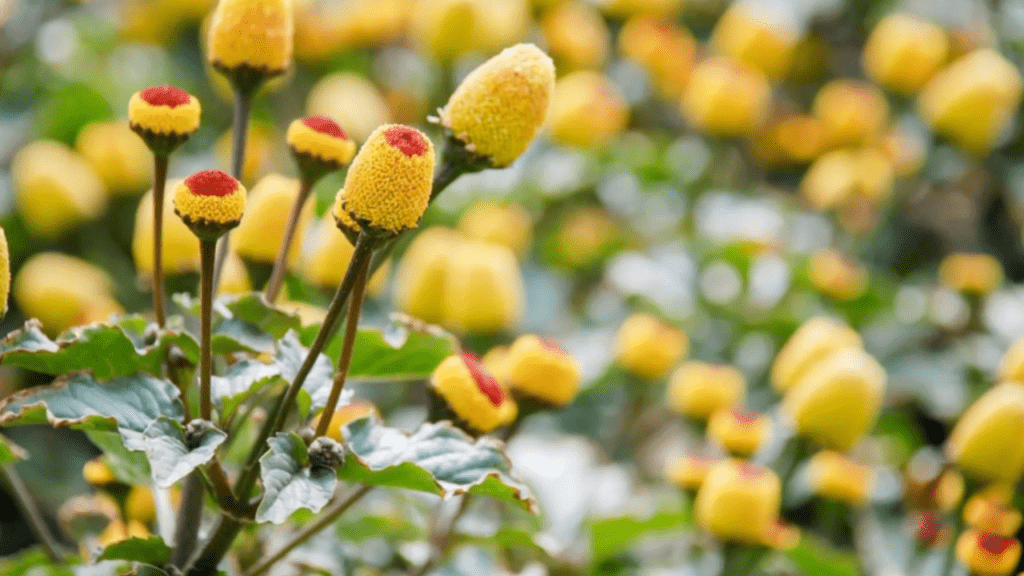
The Miracle Seed: Toothache Plant Seeds and Their Pain-Relieving Magic
Toothache plant seeds, also known as Spilanthes acmella, have been used for centuries by indigenous cultures as a natural remedy for toothaches and oral pain. These small seeds contain compounds that can offer fast and effective relief from dental discomfort, making them essential for anyone experiencing tooth pain.
The toothache plant, also known as Acmella oleracea, is a unique herb that has been used for centuries for its pain-relieving properties. The active compound in the toothache plant is spilanthol, which has been shown to have analgesic and anti-inflammatory effects. When applied topically or consumed as a tincture, the toothache plant can provide fast relief from toothaches and oral pain. In addition to its pain-relieving properties, the toothache plant also has antibacterial and antifungal properties, making it a versatile natural remedy for oral health. Whether used in traditional medicine or incorporated into modern dental care, the toothache plant is a valuable resource for anyone seeking natural relief from toothaches and oral discomfort.
Table of Contents
ToggleToothache plant seeds, also known as Spilanthes acmella, are small seeds that have been used for centuries as a natural remedy for toothaches and oral pain. The active compound in the toothache plant seeds, spilanthol, has been shown to have analgesic and anti-inflammatory effects, providing fast and effective relief from dental discomfort. These seeds also have antibacterial and antifungal properties, making them a versatile natural remedy for oral health. Whether used in traditional medicine or incorporated into modern dental care, toothache plant seeds are a valuable resource for anyone seeking natural relief from toothaches and oral discomfort.
Preview of what will be covered in the article
In this article, we will be discussing the toothache plant, also known as Acmella oleracea, and its unique properties. We will explore how the toothache plant has been used for centuries for its pain-relieving properties, its active compound spilanthol, and its potential benefits for oral health. Additionally, we will cover toothache plant seeds, also known as Spilanthes acmella, and their potential benefits for relieving dental discomfort. This article aims to provide a comprehensive overview of the toothache plant and its uses as a natural remedy for toothaches and oral pain.
Understanding Toothache Plant Seeds
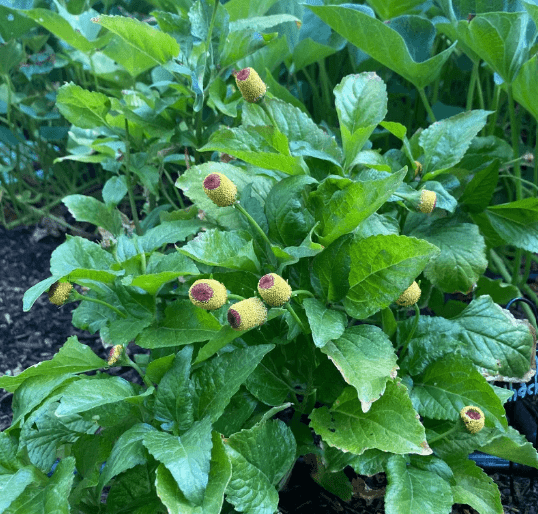
1. Description of toothache plant seeds: appearance, size, and color
Toothache plant seeds, also known as Spilanthes acmella, are small, round, and disc-shaped. They are typically about 2-3 millimeters in diameter and are a pale yellow or light brown color. These tiny seeds may not look like much, but they pack a powerful punch when it comes to providing relief from dental discomfort. Their small size and unassuming appearance make them a convenient and discreet option for natural pain relief.
2. Chemical composition and active compounds responsible for its numbing effect
Toothache plant seeds contain active compounds such as spilanthol, which is responsible for their numbing effect. This compound has been found to have analgesic and anti-inflammatory properties, making it effective for relieving toothaches and oral pain. Additionally, the seeds contain alkylamides, flavonoids, and essential oils, all of which contribute to their pain-relieving effects. These compounds work together to provide a natural and effective remedy for dental discomfort. It’s important to note that while toothache plant seeds can provide temporary relief from toothaches, they are not a substitute for professional dental care. If you are experiencing severe or persistent tooth pain, it’s important to seek the advice of a dentist.
3. Traditional and modern uses of toothache plant seeds in herbal medicine
Toothache plant seeds have been used in traditional herbal medicine for centuries to provide natural pain relief for toothaches and oral pain. The small size and unassuming appearance of the seeds make them a convenient and discreet option for natural pain relief. In modern herbal medicine, seeds are still used for their numbing effect, which is attributed to the active compound spilanthol. This compound has been found to have analgesic and anti-inflammatory properties, making it effective for relieving toothaches and oral pain. Additionally, the seeds contain alkylamides, flavonoids, and essential oils, all of which contribute to their pain-relieving effects. While toothache plant seeds can provide temporary relief from toothaches, they are not a substitute for professional dental care. It’s important to seek the advice of a dentist if you are experiencing severe or persistent tooth pain.
Health Benefits of Toothache Plant Seeds
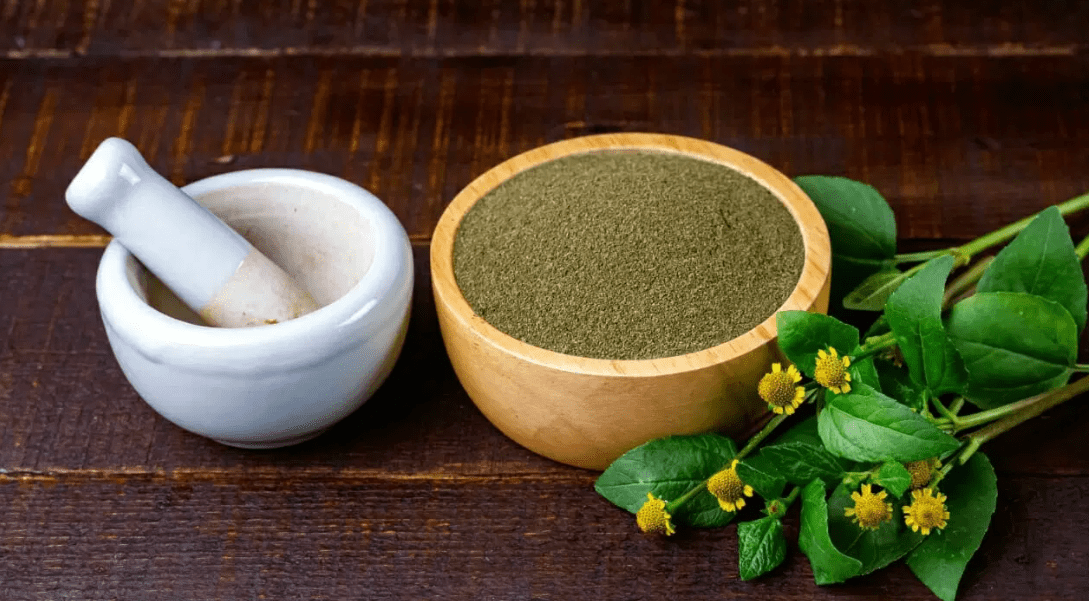
1. Analgesic properties for pain relief, particularly for toothaches and oral ailments
Toothache plant seeds have been used for their pain-relieving properties, particularly for toothaches and oral ailments. The active compound spilanthol found in the seeds has been shown to have analgesic and anti-inflammatory properties, making it effective for relieving toothaches. In addition to spilanthol, the seeds also contain alkylamides, flavonoids, and essential oils, all of which contribute to their pain-relieving effects. However, it’s important to note that while toothache plant seeds can provide temporary relief, they are not a substitute for professional dental care. If you are experiencing severe or persistent tooth pain, it’s essential to seek the advice of a dentist.
2. Anti-inflammatory effects and potential applications in treating various conditions
The toothache plant seeds have anti-inflammatory effects that can potentially be used to treat various conditions. The active compound spilanthol found in the seeds has been shown to have anti-inflammatory properties, making it effective for reducing inflammation and pain. This can be helpful in treating conditions such as arthritis, muscle pain, and other inflammatory ailments. Additionally, the seeds also contain other compounds like alkylamides, flavonoids, and essential oils, all of which contribute to their anti-inflammatory effects. However, it’s important to consult with a healthcare professional before using toothache plant seeds for any medical purposes to ensure safety and effectiveness.
3. Other potential health benefits supported by scientific research
include the ability of toothache plant seeds to improve digestion and alleviate gastrointestinal issues. The seeds contain compounds that stimulate saliva production and increase digestive enzyme activity, which can help with indigestion and other digestive discomfort. Additionally, the antimicrobial properties of the seeds have been studied for their potential to fight off certain bacteria and fungi, making them a possible natural remedy for oral health issues and skin infections. However, more research is needed to fully understand the extent of these benefits and how to best incorporate seeds into healthcare practices. It’s important to consult with a healthcare professional before using toothache plant seeds for any medical purposes to ensure safety and effectiveness.
Growing Toothache Plant from Seeds
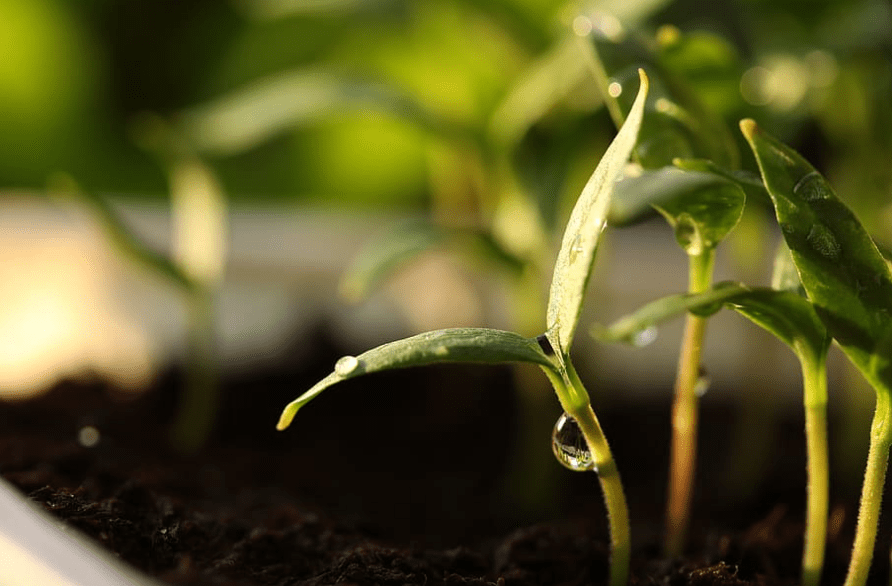
1. Selecting high-quality toothache plant seeds for cultivation
is an important step in ensuring successful growth. When choosing seeds, look for ones that are plump, firm, and free from any signs of damage or mold. It’s also a good idea to choose seeds from a reputable supplier to ensure their quality. Additionally, consider the growing conditions of the plant when selecting seeds. Some varieties may be better suited to specific climates or soil types, so be sure to choose seeds that are compatible with your local growing conditions.
Once you have selected your seeds, it’s important to plant them in well-draining, nutrient-rich soil and provide them with plenty of sunlight. Keep the soil consistently moist but not waterlogged, and monitor the plants for any signs of pests or disease. With proper care and attention, you can successfully cultivate toothache plant seeds and enjoy their potential health benefits.
2. Preparing soil and planting conditions for successful germination
is essential for the growth of healthy plants. Start by preparing the soil by removing any weeds and adding organic matter like compost to improve its texture and fertility. Make sure the soil is well-draining to prevent waterlogging, as this can lead to root rot and other issues.
When planting seeds, make sure to follow the instructions on the seed packet regarding depth and spacing. Some seeds need to be planted deeper than others, so be sure to read the guidelines carefully. Additionally, seeds need warmth and moisture to germinate, so keep the soil consistently moist but not waterlogged. Consider using a seed starting mix or a light potting soil to provide the ideal conditions for germination.
It’s also important to consider the planting conditions for specific types of seeds. Some plants require full sun, while others thrive in partial shade. Understanding the needs of the seeds you are planting will help ensure successful germination and healthy plant growth.
By taking the time to prepare the soil and provide the right planting conditions, you can set the stage for successful germination and the growth of strong, healthy plants. Remember to monitor the soil moisture, provide adequate sunlight, and protect the seeds from pests and diseases to support their growth. With proper care and attention, you can enjoy a bountiful garden filled with thriving plants.
3. Care and maintenance tips for nurturing toothache plant seedlings to maturity
To nurture toothache plant seedlings to maturity, it’s important to start with the right soil and planting conditions. Use a seed starting mix or light potting soil to provide ideal conditions for germination. Make sure to understand the specific needs of the seeds you are planting, as some plants require full sun while others thrive in partial shade. Providing the right planting conditions will help ensure successful germination and healthy plant growth.
Once you’ve planted the seeds, it’s important to monitor the soil moisture, provide adequate sunlight, and protect the seeds from pests and diseases. This will support their growth and help them reach maturity. Regular watering and proper sunlight exposure are essential for the toothache plant seedlings to thrive.
As the seedlings grow, make sure to continue monitoring their growth and health. Prune and trim the plants as needed, and provide support if they start to grow too tall or become top-heavy. By giving the seedlings proper care and attention, you can help them reach maturity and enjoy the benefits of a bountiful garden filled with thriving toothache plants.
Harvesting and Storing Toothache Plant Seeds
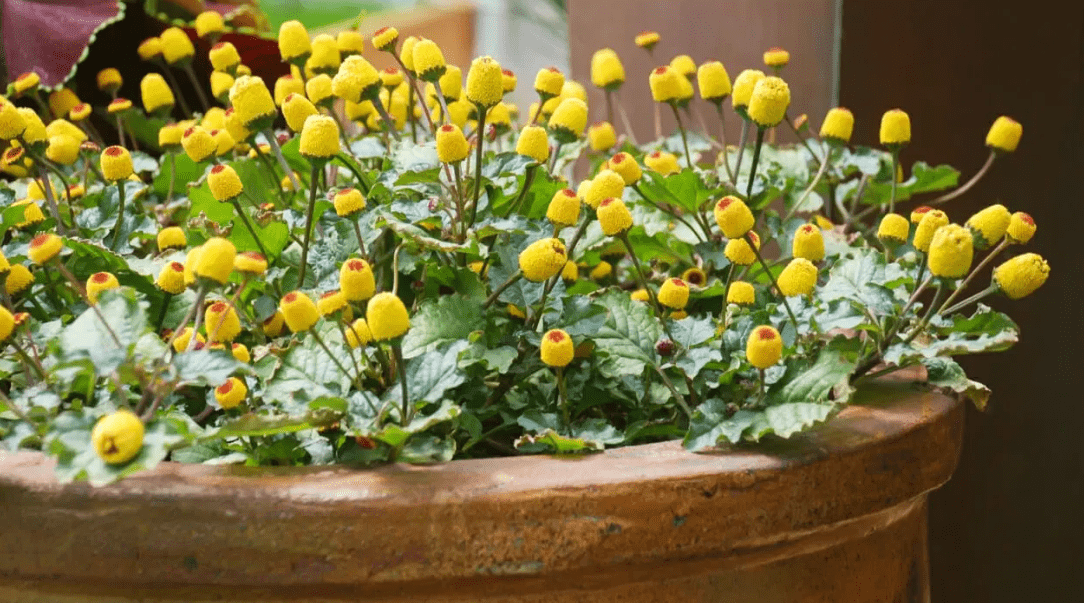
1. Signs of readiness for harvesting toothache plant seeds
include the plant reaching full maturity, with fully developed flowers and the seed heads turning brown. You can also gently shake the seed heads and if the seeds rattle inside, they are ready to be harvested. Another sign is when the flowers start to dry out and the seed pods begin to crack open. Once you notice these signs, it’s time to harvest the seeds. Use scissors or pruners to carefully cut the seed heads from the plant and place them in a paper bag to dry further. Once the seeds are completely dry, store them in an airtight container in a cool, dark place until you are ready to plant them again. By paying attention to these signs of readiness, you can ensure that you harvest toothache plant seeds at the perfect time for the best results.
2. Techniques for harvesting seeds without damaging the plant
include being gentle and careful when removing the seeds. Use pruners or scissors to carefully cut the seed heads from the plant, ensuring that you don’t damage the plant in the process. It’s important to wait until the seeds are fully mature and the seed heads have turned brown before harvesting them. Another technique is to shake the seed heads gently and listen for the sound of the seeds rattling inside, indicating that they are ready to be harvested. Additionally, keep an eye out for dried out flowers and cracked open seed pods as signs that the seeds are ready for harvesting. Once you have harvested the seeds, place them in a paper bag to dry further before storing them in an airtight container in a cool, dark place. By using these gentle and careful techniques, you can harvest seeds without damaging the plant and ensure a successful harvest for future planting.
3. Proper storage methods to maintain seed viability over time
include keeping seeds in a cool, dry place to prevent mold and decay. It’s important to store seeds in an airtight container to protect them from moisture and pests. Additionally, labeling the containers with the type of seed and the date harvested will help you keep track of their viability. Some seeds can be stored in the refrigerator or freezer to extend their shelf life. Using these proper storage methods will help you maintain the viability of your seeds over time, ensuring that they will be ready for successful planting in the future.
In conclusion, the toothache plant seeds have been used for centuries as a natural remedy for toothache pain. They contain compounds that have pain-relieving properties, making them a popular choice for those seeking natural relief. If you suffer from toothache pain, consider growing and using these miracle seeds to experience their pain-relieving magic. However, it’s always important to consult with a healthcare professional for any serious dental issues.
Frequently asked question and Answer
Toothache plant seeds contain a chemical called spilanthol, which has numbing and pain-relieving properties when applied to the affected area.
When used in small doses and properly prepared, toothache plant seeds are generally safe to use. However, it’s important to consult with a healthcare professional before using them, especially if you have any underlying health conditions or are pregnant or breastfeeding.
The seeds can be crushed and mixed with a carrier oil, such as coconut or olive oil, to create a topical solution. They can also be used to make a mouth rinse or gargle for oral pain relief.
Some individuals may experience mild irritation or allergic reactions when using toothache plant seeds. It’s important to perform a patch test before using them and discontinue use if any adverse reactions occur.
Toothache plant seeds can be found at certain nurseries, garden centers, and online retailers that specialize in unique and exotic plants.
While toothache plant seeds are primarily known for their ability to relieve dental pain, some people also use them for other types of localized pain, such as muscle aches and joint pain.
The pain-relieving effects of toothache plant seeds can be felt within a few minutes of application. However, the duration of relief may vary depending on the individual and the severity of the pain.
It’s important to use toothache plant seeds in moderation and follow the recommended dosage guidelines. If you experience prolonged or severe pain, it’s essential to seek professional dental or medical care.
